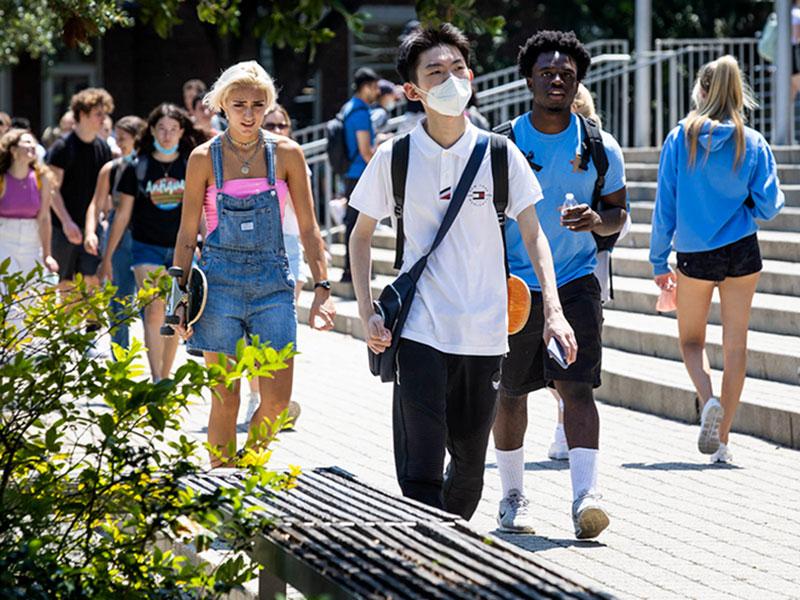Flood protection improvements mean Tulane and NOLA can return to normal sooner
When Tulane students return to residence halls late next week ahead of in-person classes that begin on Sept. 27, they will be doing so a full two weeks earlier than expected.
Tulane President Michael Fitts credits improvements to the region’s elaborate storm protection system and other infrastructure upgrades for making such a return possible so soon after Hurricane Ida swept through Louisiana.
“Ida was not a Katrina in terms of storm surge and other impacts, but it was still a real test of our levee protection system and that system performed remarkably well. That was the key to sparing New Orleans from the catastrophic flooding experienced in other areas,” Fitts said. “As we open for business, we are also reaching out to outlying towns and communities to see how we can help them.”
In addition to the billions of dollars spent by the federal government to improve levees and other flood protection infrastructure, Fitts said local investment in storm and flood-proofing efforts also paid off.
“The University Medical Center, Southeast Louisiana Veterans Health Care System and other hospitals that were built after Katrina are all elevated, with their vulnerable computer and medical equipment located on higher ground. This elevation spared such equipment from the impact of street flooding that can occur even when the levees hold,” Fitts said.
Businesses, as well as public and private institutions, took similar precautions, placing emergency generators, electrical and other crucial infrastructure significantly higher than ground floor.
As a major national research university, Tulane prioritized the protection of research — much of which requires continued refrigeration at -20 or -80 degrees Celsius — before, during and after the storm. Though some research samples were lost during the extended power outages, many were preserved through the use of freezer farms — rows of specially designed freezers that store thousands of biological samples from the university’s medical and basic science research programs. The School of Medicine’s facility downtown has 25 freezers and the Tulane National Primate Research Center has more than 85 in its freezer farm across the lake. Both were continuously powered by backup generators during the electrical outage caused by the storm.
There were also enhanced and improved plans that allow hospital teams to better deal with emergencies.
“After Hurricane Katrina, hospitals and medical schools became much better organized and educated about hurricane situations,” said Lee Hamm, senior vice president and dean of the School of Medicine. “Clinician teams became predominantly voluntary and leaner – to avoid having excess numbers of people – and better trained. Relief teams were also formed so that as soon as possible the teams that stayed in the hospitals could be relieved by a fresh clinician team, preserving quality care.”
Tulane, through its Institute on Water Resources Law and Policy, the ByWater Institute and the Department of River-Coastal Science and Engineering, has played a crucial role in helping to improve levees and water management within the city and state.
From helping to draft portions of the city’s Master Plan and the Greater New Orleans Urban Water Plan to working with government and civic groups at all levels on wide range of water management, coastal restoration, climate change and flood protection efforts, Tulane is redefining the roles a research university can – and must – play in dealing with risks presented by water.
Tulane’s leading role can be seen in the lab, classrooms and throughout the community in projects like the Gentilly Resilience District, one of the largest urban stormwater management projects ever undertaken in the United States as well as its multiple roles in Gov. John Bel Edwards’ Climate Initiative. In addition, the ByWater Institute is working with the city of New Orleans to inform urban forestry practices and develop ecosystem-based strategies for green infrastructure designed to intercept stormwater and improve the performance of the city’s drainage system.

